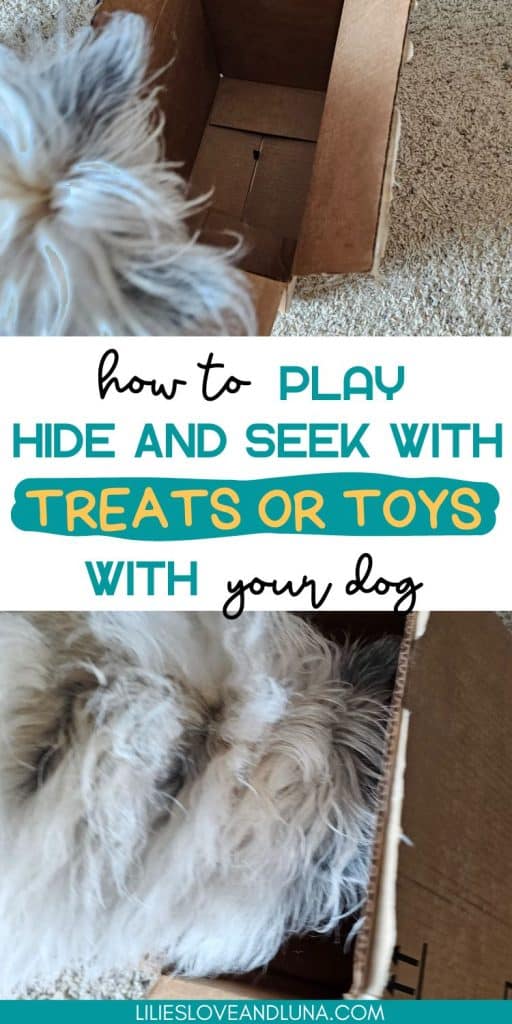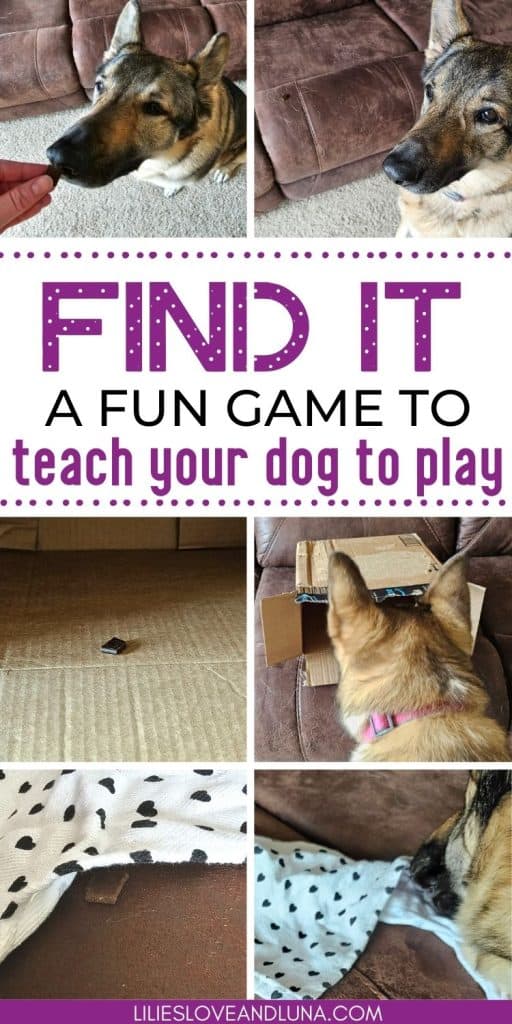Teaching your dog new tricks can be a fun and rewarding experience for both you and your furry friend. One popular fun game that can provide mental stimulation and entertainment for your dog is “Find It”. This game involves hiding treats or toys and having your dog use their sense of smell to locate them.
Not only is “Find It” a great way to keep your dog entertained, but it can also help improve their obedience and focus. By teaching your dog to search for specific items, you can reinforce commands such as “stay” and “come”. Additionally, this game can help build your dog’s confidence and independence as they learn to problem-solve and explore their environment.
Whether you have a new puppy or an older dog, “Find It” is a game that can be enjoyed by all breeds and ages.
With a little patience and practice, you can teach your dog this fun and stimulating game that will provide hours of entertainment and mental and physical exercise for both you and your furry companion.

Understanding the Game
The “Find It” game is a fun and engaging activity that can help your dog develop their problem-solving skills and mental stimulation.
The game is simple, it involves hiding a treat or toy and then encouraging your dog to find it. The game of find it relies on your dog’s sense of smell to find the hidden treats or toys.
This game is perfect for dogs of all ages and breeds, and it can be played both indoors and outdoors. It’s also a great game for the whole family. Children can have a lot of fun hiding treats for the family dog to find.
How to teach “Find It” with treats
When teaching a new game to your dog it’s best to start as easily as possible. For “find it,” also known as treat hide and seek, I find it is easiest to start by teaching the game with treats and then move to toys once they know how to play the game.
Choosing the right treats
When it comes to teaching your dog to “Find It,” choosing the right treats is crucial. You want to make sure that you choose yummy treats for your dog. If your dog doesn’t like the treat, they won’t play the game.
You want to choose small and smelly treats if possible. Small treats allow you to play multiple times without having to worry as much about the extra calories your dog is getting. Smelly treats will be easier for your dog to sniff out.
Any type of small, smelly treat will work but I prefer to use commercial dog treats or pieces of kibble (though both Luna and Morgan much prefer it when we play with treats). If your dog’s favorite treats are large, but they are easy to break into smaller pieces, those will work as well.
I like the commercial treats because they all seem to have a strong smell to me. And since dogs have such an amazing sense of smell, if I think it has a strong smell, they should definitely be able to smell it.
Start with basic commands
Before teaching your dog to “find it,” you need to make sure they have mastered basic commands such as “sit,” “stay,” and “come.” These commands will help you control your dog during the training process and ensure they understand what you are asking them to do.
Begin by practicing working on your dog training with these basic commands with your dog in a quiet, distraction-free environment. Use positive reinforcement techniques such as a tasty treat, praise, and affection to encourage your dog to follow your commands.
Use a command word
Once your dog has mastered these basic commands, you can begin teaching them to “find it.”
Start by having your dog in a sit and stay position. Place a small treat or piece of kibble in plain sight and give a command word (also known as a cue word) such as “find it” or “search” when you release them from their sit and stay.
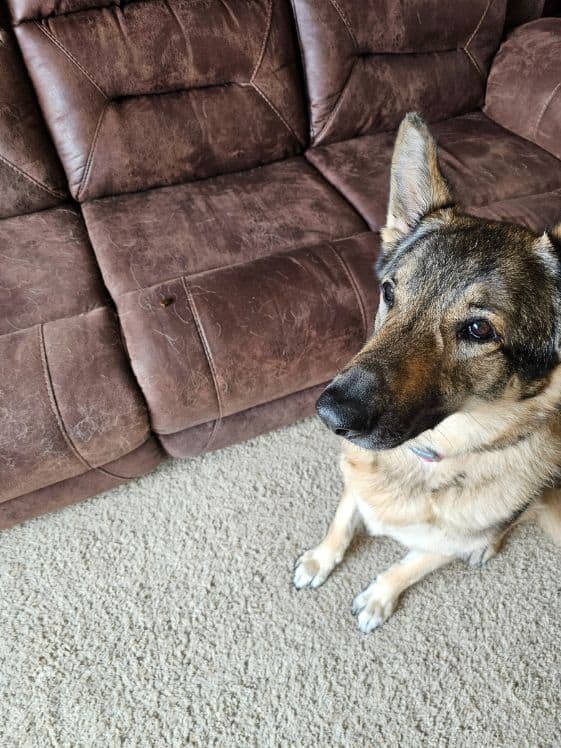
Repeat the process several times with the treat in plain view each time until your dog seems to understand that the cue word means to go find the treat.
Use easy hiding spots at first
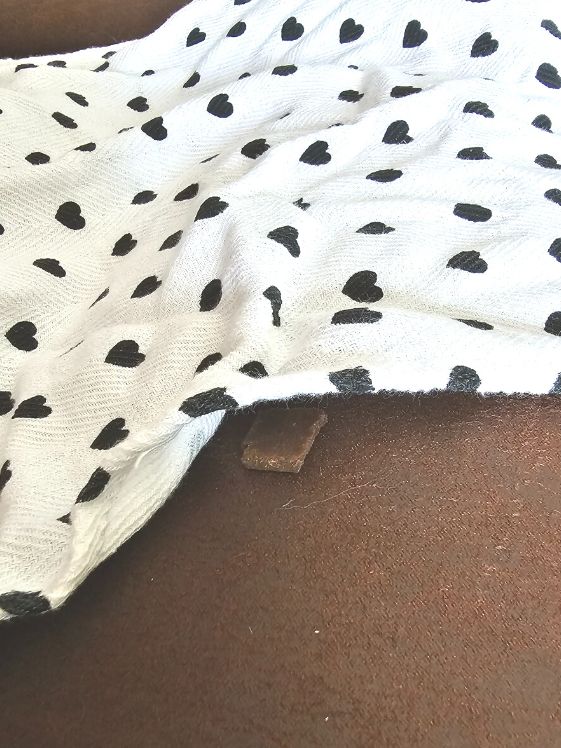
Once they seem to understand the cue word, start hiding the treat in very simple places.
These could be on the couch with a small pillow over the treat, a hand towel or washcloth over the treat, or even by placing the treat inside an open cardboard box. Whatever you choose, make sure it is easy for your dog to get to.

Once you have the hiding place chosen, have your dog sit and stay where they can see the hiding spot.
Show them the small dog treat that you are going to hide and allow them to sniff it. Then place it in the hiding spot while they watch you.
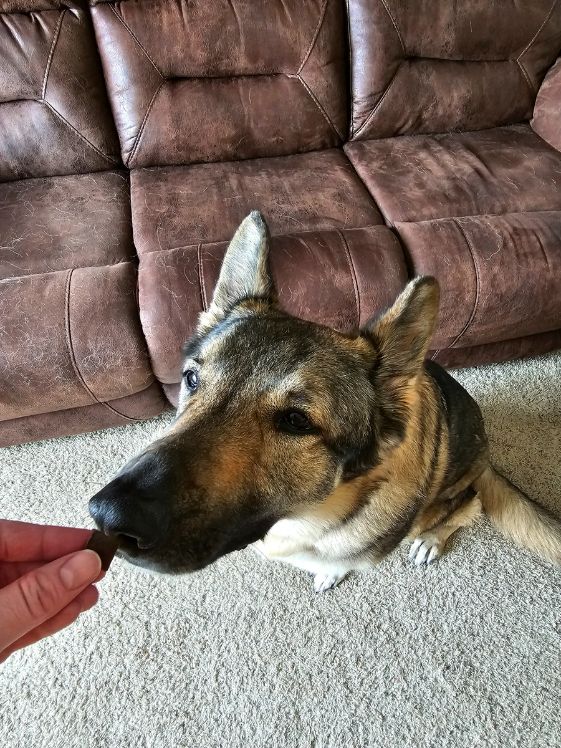
Once the treat is hidden, give your dog the release cue and then give them the find it command. Once they find it, praise your dog’s success and let them eat the treat.
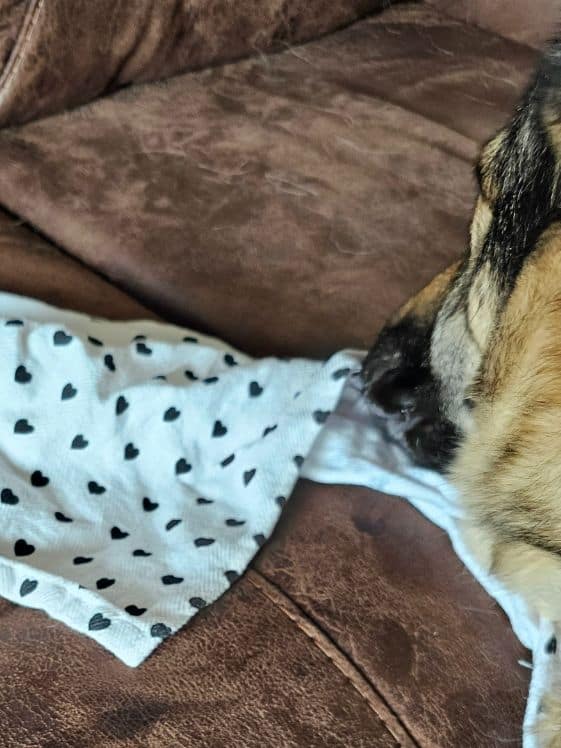
Gradually increase difficulty level
Once your dog has mastered the basics of “Find It” with easy-to-find treats, it’s time to increase the difficulty. Gradually increasing the difficulty will keep your dog engaged and challenged, helping to reinforce the training.
Start by continuing to use easy to find hiding places but stop letting your dog watch you hide the treats. This helps to teach them to find the treat by using the scent of the treat.
Once they are able to find the treats without seeing where they are hidden, start hiding the treats in harder spots.

It’s important to remember to only increase the level of difficulty as your dog becomes more comfortable with the game. If you make it too challenging too quickly, your dog may become frustrated and lose interest in playing.
Additionally, be sure to continue to reward your dog with praise when they find the hidden treat.
This positive reinforcement, along with letting them eat the treat when they find it, will help to solidify the training and keep your dog motivated to continue playing “Find It”.
Encourage your dog
Make sure to encourage your dog, especially if they are struggling with the first couple of steps. You can encourage them by standing close to the treat’s hiding spot and getting your dog to come to you.
Once you get them near the treat, if they still haven’t found it, try patting the area near the treat to get your dog to sniff there.
When they do finally find the treat give them lots of verbal praise and even some pets. Go overboard in your excitement so they understand that finding the treat is what you want them to do.
How to teach find it with a dog toy
If you don’t have any treats on hand, or your dog has already mastered find it with treats, you can use a toy instead.
Follow these steps to teach your dog find it with a toy:
- Choose a toy. Pick a toy your dog really likes, your dog’s favorite toy is the best option if possible. This helps to keep them motivated enough to search for it.
- Show the toy. Show the toy you chose to your dog. Let them sniff it and get excited about it.
- Hide the toy. Once your dog is familiar with the toy, hide it in an easy spot, like behind a chair leg, while they are watching.
- Release your dog. Once the toy is hidden, release your dog and encourage them to find the toy.
- Reward your dog. When your dog finds the toy, reward them. This can be verbal praise along with either a treat or a tug or other play session. Use whatever reward your dog would like most.
Once your dog regularly gets the toy when they watch you hide it, you can start hiding it without them watching. As they get more comfortable with the game, you can start hiding it in more difficult locations.
Common mistakes to avoid
Teaching your dog to “Find It” can be a fun and rewarding experience for both you and your furry friend. However, there are some common mistakes that owners make that can hinder the success of the training.
Starting too difficult
Starting with too difficult of hiding spots may cause your dog to become frustrated and lose interest in the game.
It’s important to start with easy hiding spots at first to help your dog learn the game. Once they are reliably finding the treats or toys in easy spots, then gradually make it more difficult.
If your dog begins to be unable to find the treats or toys, go back to less difficult hiding spots.
Not using a consistent cue
Using different cues, or different people using different cues, can make it more difficult for your dog to understand what it is you want them to do.
If your dog can’t understand what you want it is likely to lead to confusion on their part and frustration on your part.
Everyone using the same cue every time is more likely to lead to your dog learning the game more quickly. And this will lead to them, and you, having more fun with the game.
Not rewarding your dog
When your dog finds the hidden object, it’s important to reward them with praise and treats. If you don’t reward your dog, they may lose interest in the game.
When playing find it with treats, the treat reward is built into the game. Just let them eat the treat they found.
If you are playing find it with toys and using treats as a reward, make sure to give the treat right after they find the toy. This helps them to learn the finding of the toy is what is getting them the treat.
Not practicing enough
Like any new skill, “Find It” requires practice. If you don’t practice enough, your dog may forget what they learned or not improve as quickly as they could.
Try to practice at least a few times a week, but daily would be better in the beginning. This will help your dog to learn the game and remember it better.
Once your dog understands the game, you can cut down on the number of practices.
Getting frustrated
If you become frustrated during the training, your dog may pick up on your negative energy and become anxious or stressed. It’s important to stay patient and positive during the training.
Becoming frustrated with your dog because they can’t find the treat or toy is a sign that you increased the difficulty too quickly for your dog. Take a break for that day and then go back to an easier step the next day.
By avoiding these common mistakes, you can help ensure that your dog has a positive experience learning how to “Find It”. Remember to start with easy hiding spots, use a consistent cue, reward your dog, practice regularly, and stay patient and positive throughout the training.
Related articles
The Which Hand Game: An Easy Way To Have Fun With Your Dog
Rainy Day Fun: Keep Your Dog Busy With a DIY Indoor Obstacle Course
